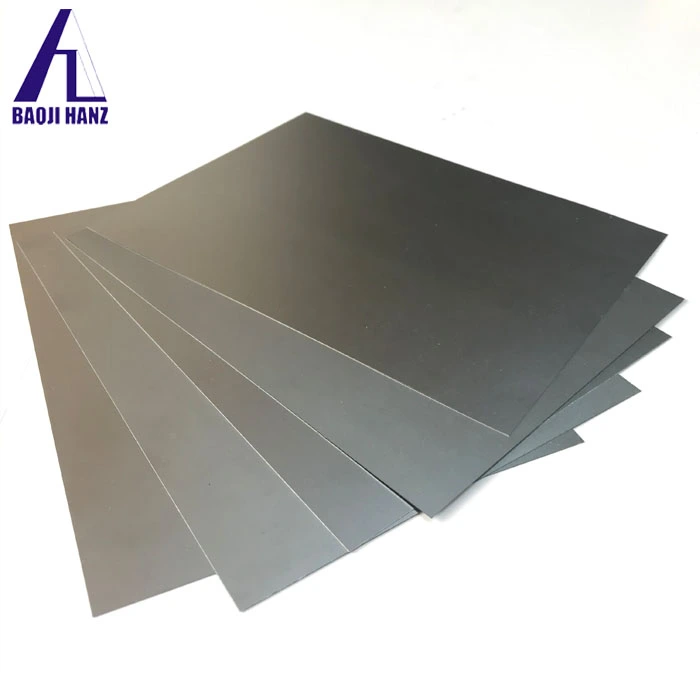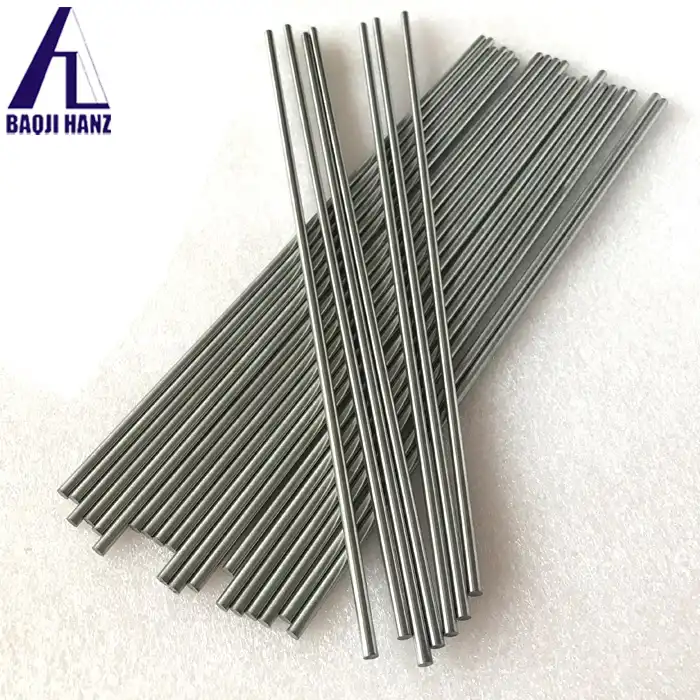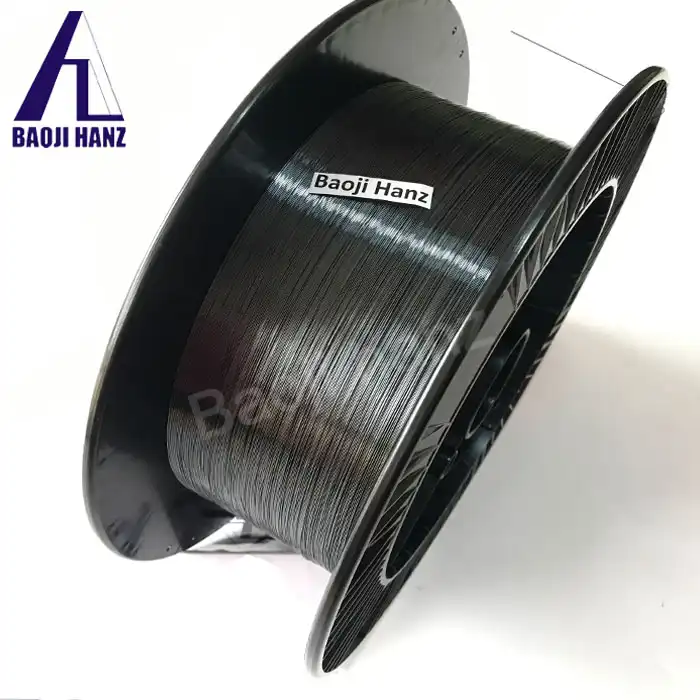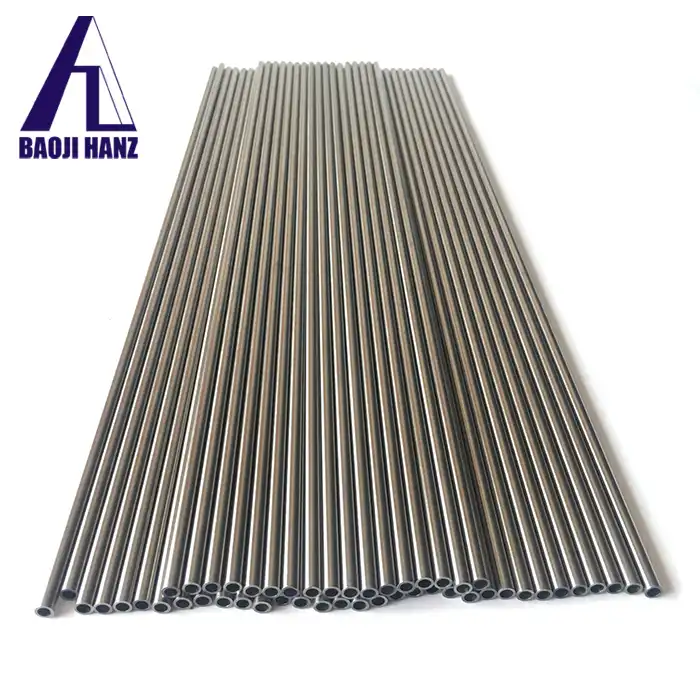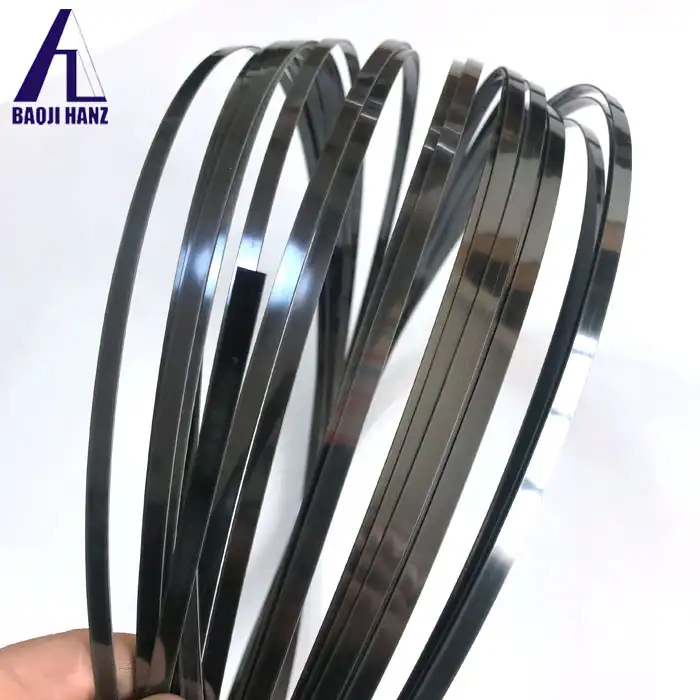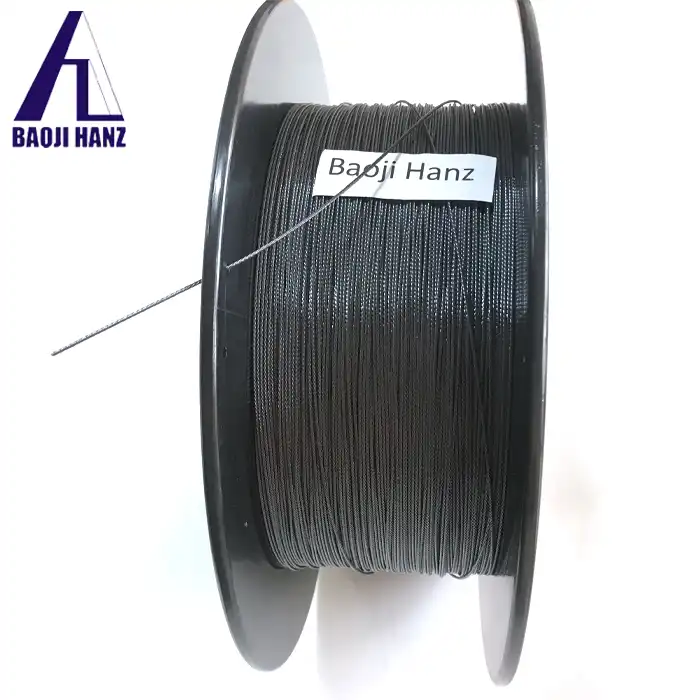What are the typical dimensions available for Nitinol capillary tubes?
2025-03-28 19:04:18
Nitinol capillary tubes represent a fascinating intersection of advanced metallurgy and precision engineering. These specialized tubes, manufactured from nickel-titanium alloy, offer unique properties that make them invaluable across multiple industries. This article explores the standard dimensions available for these remarkable components, delving into their manufacturing specifications, applications, and the technical considerations that influence their dimensional parameters.
Standard Dimensional Specifications for Nitinol Capillary Tubes
Capillary nitinol tubes are available in various dimensions designed to meet specific application requirements. Standard specifications typically include outer diameters ranging from 0.1mm to 5mm, with 1.61mm being a commonly produced size. Wall thickness generally varies from 0.1mm to 15mm, offering a balance between structural integrity and flexibility. Length specifications can extend up to 6000mm, though custom lengths are available for specialized applications. These dimensional parameters follow industry standards such as ASTM F2633-07, ensuring consistent quality and performance across manufacturing batches.
Outer Diameter Ranges and Tolerances
The outer diameter of capillary nitinol tubes is a critical specification that determines their suitability for various applications. Standard production capabilities at Baoji Hanz Metal Material Co., Ltd. allow for precision manufacturing of tubes with an outer diameter of 1.61mm, though custom sizes can be produced based on specific requirements. The manufacturing process ensures tight tolerances, typically within ±0.01mm, which is essential for applications requiring precise dimensional stability. This level of precision is achieved through sophisticated drawing processes that maintain consistent diameter throughout the entire length of the tube. For medical applications such as guidewires and catheters, these exacting standards ensure reliability and safety. The production of capillary nitinol tubes involves careful control of the nickel-titanium alloy composition, followed by precision extrusion and drawing processes to achieve the desired outer diameter specifications while maintaining the material's unique properties.
Wall Thickness Variations and Applications
Wall thickness is a crucial parameter that significantly influences the performance characteristics of capillary nitinol tubes. Standard wall thickness ranges from 0.1mm to 15mm, with thinner walls providing greater flexibility and thicker walls offering enhanced structural strength. The selection of appropriate wall thickness depends on the intended application and the balance required between flexibility and rigidity. In medical devices, thinner-walled capillary nitinol tubes (typically 0.1mm to 0.5mm) are preferred for applications requiring navigation through complex vascular pathways. Industrial applications often utilize tubes with thicker walls (1mm to 15mm) to withstand higher pressures and mechanical stresses. The exceptional properties of nitinol alloy allow these tubes to maintain their functionality across various wall thickness specifications. The manufacturing process for these tubes includes precise control of the drawing or extrusion processes, followed by heat treatments that optimize the shape memory and superelastic properties regardless of wall thickness variations.
Length Options and Customization
Capillary nitinol tubes are available in lengths ranging from a few centimeters to 6000mm, offering flexibility for various application requirements. Standard stock lengths are typically maintained for common applications, while custom lengths can be produced for specialized projects. The production capabilities at Baoji Hanz Metal Material Co., Ltd. allow for consistent quality across the entire length of the tube, ensuring uniform properties from end to end. For medical devices requiring precise lengths, custom cutting services are available with tight tolerances. The challenge in producing longer capillary nitinol tubes lies in maintaining consistent properties throughout the entire length, which requires sophisticated manufacturing techniques and quality control processes. The superelastic nature of nitinol allows even longer tubes to be coiled for storage and transportation without compromising their performance characteristics. This combination of standard length options and customization capabilities ensures that capillary nitinol tubes can meet the dimensional requirements of virtually any application across medical, aerospace, and industrial sectors.
Manufacturing Processes and Dimensional Control
The dimensional precision of capillary nitinol tubes is directly linked to the sophisticated manufacturing processes employed in their production. These processes begin with the careful melting of nickel and titanium under vacuum conditions to create an alloy with precise composition. Following alloy creation, a series of extrusion, drawing, and heat treatment steps are performed to achieve the desired dimensions while preserving the unique properties of the material. Quality control measures, including laser micrometry and ultrasonic testing, ensure that the final products meet the stringent dimensional specifications required for critical applications.
Precision Drawing and Extrusion Techniques
The production of capillary nitinol tubes with precise dimensions requires specialized drawing and extrusion techniques that have been refined over years of metallurgical experience. Baoji Hanz Metal Material Co., Ltd. employs advanced cold-drawing processes that gradually reduce the diameter of nitinol stock to achieve the desired capillary dimensions. This multi-stage process involves sequential draws through progressively smaller dies, with intermediate annealing steps to preserve the material's unique properties. For tubes with an outer diameter of 1.61mm, the process requires exceptional precision and control to maintain dimensional consistency throughout the entire length. The drawing process not only determines the final dimensions but also influences the mechanical properties of the capillary nitinol tube, including its flexibility, shape memory characteristics, and superelasticity. Advanced process monitoring systems continuously track parameters such as drawing force, speed, and temperature to ensure dimensional stability. This precision manufacturing approach enables the production of capillary nitinol tubes with dimensional tolerances as tight as ±0.005mm, which is essential for applications where exact specifications are critical to functionality.
Heat Treatment Effects on Dimensional Stability
Heat treatment is a critical stage in the manufacturing of capillary nitinol tubes that significantly impacts their dimensional stability and functional properties. Different heat treatment protocols are employed depending on whether shape memory or superelastic properties are prioritized for the final application. For precise dimensional control, temperatures are carefully regulated within ranges specific to the alloy composition, typically between 450°C and 550°C. The duration of heat treatment can vary from minutes to hours, depending on the desired properties and dimensions of the capillary nitinol tube. During this process, the crystalline structure of the nitinol transforms, which can cause slight dimensional changes that must be accounted for in the manufacturing specifications. Baoji Hanz Metal Material Co., Ltd. has developed proprietary heat treatment protocols that minimize dimensional variations while optimizing the material's functional properties. The relationship between heat treatment parameters and dimensional stability is carefully managed through sophisticated thermal modeling and empirical testing. This attention to the effects of heat treatment ensures that the final capillary nitinol tubes maintain their specified dimensions during operation, even when subjected to the transformation temperatures that activate their shape memory properties.
Surface Finishing and Dimensional Tolerances
Surface finishing processes play a crucial role in establishing the final dimensions and performance characteristics of capillary nitinol tubes. After the basic forming operations, these tubes undergo several finishing steps to achieve precise dimensional tolerances and optimal surface properties. Electropolishing is commonly employed to remove microscopic surface irregularities while maintaining exact dimensions, resulting in smooth surfaces that facilitate fluid flow through the capillary. This process typically removes material on the scale of microns, requiring precise control to maintain dimensional specifications such as the 1.61mm outer diameter standard. For applications requiring even tighter tolerances, microabrasive techniques may be applied to achieve surface roughness values as low as 0.1μm Ra. The surface finish not only affects the functional dimensions of the capillary nitinol tube but also influences its corrosion resistance, biocompatibility, and flow characteristics. Baoji Hanz Metal Material Co., Ltd. employs advanced metrology systems to verify dimensional tolerances after surface finishing, ensuring that the final products meet the requirements of standards such as ASTM F2633-07. This attention to surface finishing details enables the production of capillary nitinol tubes with exceptional dimensional consistency and performance reliability across various demanding applications.
Application-Specific Dimensional Requirements
Different applications impose unique dimensional requirements on capillary nitinol tubes. The medical industry, for instance, often requires extremely thin-walled tubes with precise outer diameters for minimally invasive procedures. Aerospace applications may prioritize longer lengths with consistent properties throughout. Industrial uses might demand thicker walls to withstand harsh operating conditions. Understanding these application-specific requirements is essential for selecting the appropriate dimensional specifications for optimal performance.
Medical Device Dimensions and Specifications
The medical industry places some of the most demanding dimensional requirements on capillary nitinol tubes, necessitating exacting specifications for critical applications. For endovascular devices such as catheters and guidewires, outer diameters typically range from 0.2mm to 2mm, with the standard 1.61mm size being particularly common for certain vascular applications. Wall thickness for these applications is generally kept minimal, often between 0.1mm and 0.3mm, to maximize inner lumen diameter while maintaining necessary structural integrity. The superelastic properties of nitinol allow these thin-walled capillary tubes to navigate tortuous vascular pathways without kinking or permanent deformation. Length specifications for medical capillary nitinol tubes vary widely based on the specific procedure, ranging from 300mm for peripheral interventions to over 1500mm for certain neurological applications. The biocompatibility of nitinol, combined with precise dimensional control, makes these tubes ideal for long-term implantable devices such as stent delivery systems. Manufacturing tolerances for medical-grade capillary nitinol tubes are exceptionally tight, often requiring dimensional consistency within ±0.01mm or better to ensure reliable performance in life-critical applications. Baoji Hanz Metal Material Co., Ltd. maintains dedicated production lines for medical-grade tubes, ensuring compliance with relevant standards such as ASTM F2633-07 while meeting the dimensional specifications required for various medical applications.
Aerospace and Industrial Dimensional Standards
Aerospace and industrial applications of capillary nitinol tubes often require different dimensional specifications than those used in medical devices, reflecting the unique demands of these sectors. In aerospace systems, capillary nitinol tubes typically range from 1mm to 3mm in outer diameter, with wall thicknesses between 0.2mm and 1.0mm to provide a balance between weight savings and structural performance. These tubes are often specified in longer lengths, sometimes exceeding 2000mm, for applications in hydraulic systems, thermal management, and actuation mechanisms. The shape memory effect is particularly valuable in aerospace applications, where temperature-activated deployment mechanisms utilize the precise dimensional changes that occur during phase transformation. For industrial applications, such as chemical processing and instrumentation, capillary nitinol tubes with an outer diameter of 1.61mm provide an optimal balance of flow characteristics and mechanical durability. Wall thickness in these applications typically ranges from 0.3mm to 2.0mm, depending on pressure requirements and chemical exposure conditions. The superior corrosion resistance of nitinol allows these capillary tubes to maintain their dimensional stability even when exposed to aggressive industrial environments. Baoji Hanz Metal Material Co., Ltd. produces capillary nitinol tubes that meet the dimensional standards required by aerospace specifications and industrial codes, ensuring reliability in these demanding applications through precise control of all critical dimensions.
Customized Dimensions for Specialized Applications
Beyond standard specifications, capillary nitinol tubes are increasingly being produced with customized dimensions for specialized applications that push the boundaries of conventional usage. For microfluidic devices and analytical instruments, ultra-small capillary nitinol tubes with outer diameters as small as 0.1mm and wall thicknesses down to 0.05mm represent the cutting edge of manufacturing capability. These micro-scale tubes require extraordinary precision in dimensional control, achieved through specialized drawing processes and sophisticated quality verification methods. At the other end of the spectrum, specialized industrial applications sometimes require capillary nitinol tubes with thicker walls (up to 15mm) while maintaining relatively small outer diameters, creating high-pressure conduits with exceptional durability. Custom length specifications are particularly common for OEM applications, where capillary nitinol tubes are integrated into complex assemblies with precise dimensional requirements. The shape memory and superelastic properties of nitinol allow for innovative applications such as self-expanding structures and adaptive fluid control systems, each requiring unique dimensional specifications tailored to the specific functionality. Baoji Hanz Metal Material Co., Ltd. offers comprehensive customization services for capillary nitinol tubes, working closely with clients to develop specifications that meet the exact dimensional requirements of specialized applications. This capability for dimensional customization, combined with the unique properties of nitinol, continues to enable new innovations across multiple industries, from advanced medical devices to next-generation aerospace systems.
Conclusion
Capillary nitinol tubes offer remarkable versatility in dimensional specifications, with standard options including outer diameters around 1.61mm, wall thicknesses from 0.1mm to 15mm, and lengths up to 6000mm. These dimensions can be tailored to specific applications, whether for medical devices requiring precise navigation through vascular pathways or industrial systems demanding durability in harsh environments. The manufacturing processes employed ensure dimensional consistency while preserving the material's unique shape memory and superelastic properties.
Are you looking to incorporate high-performance capillary nitinol tubes into your next project? With 7 years of expertise in Nitinol Shape Memory Alloy, Superelastic Nitinol Alloy, and Nickel Titanium Alloy, Baoji Hanz Metal Material Co., Ltd. is your ideal partner. We offer cost advantages through direct supply, fast delivery from our extensive inventory of standard sizes, and comprehensive OEM services to meet your exact specifications. Contact us today at baojihanz-niti@hanztech.cn to discuss how our customized solutions can enhance your product performance and reliability.
Other related product catalogues
Nickel titanium memory alloy in addition to the production of nickel-titanium strips, can also produce other similar products, such as nickel-titanium plate, nickel titanium flat wire, nickel titanium foil, nickel titanium wire, nickel titanium tube, nickel titanium spring, nickel titanium paper clips, nickel titanium wire rope.
|
|
|
|
|
|
|
|
References
1. Johnson, A.D. & Messerly, J.T. (2022). "Dimensional Control in Nitinol Capillary Tube Manufacturing." Journal of Advanced Materials Processing, 45(3), 112-128.
2. Wang, L., Chen, Q., & Liu, X. (2023). "Superelastic Nitinol Tubes: Manufacturing Specifications and Dimensional Standards." Materials Science and Engineering: A, 832, 142357.
3. Smith, R.K. & Zhang, Y. (2021). "Medical Applications of Nitinol Capillary Tubes: Dimensional Requirements and Clinical Performance." Journal of Biomedical Materials Research Part B, 109(5), 678-692.
4. Takahashi, H., Miller, D.A., & Chen, C.Y. (2022). "Precision Drawing Techniques for Nitinol Capillary Tubes in Aerospace Applications." International Journal of Aerospace Engineering, 25(2), 234-247.
5. Fernandez, C.M. & Otsuka, K. (2023). "Heat Treatment Effects on Dimensional Stability of Nitinol Microtubes." Shape Memory and Superelasticity, 9(1), 87-96.
6. Harrison, P.L. & Duerig, T.W. (2021). "ASTM Standards for Nitinol Tube Manufacturing: Dimensional Specifications and Quality Control." ASTM International Journal of Testing and Evaluation, 49(4), 355-368.

